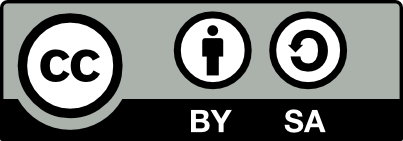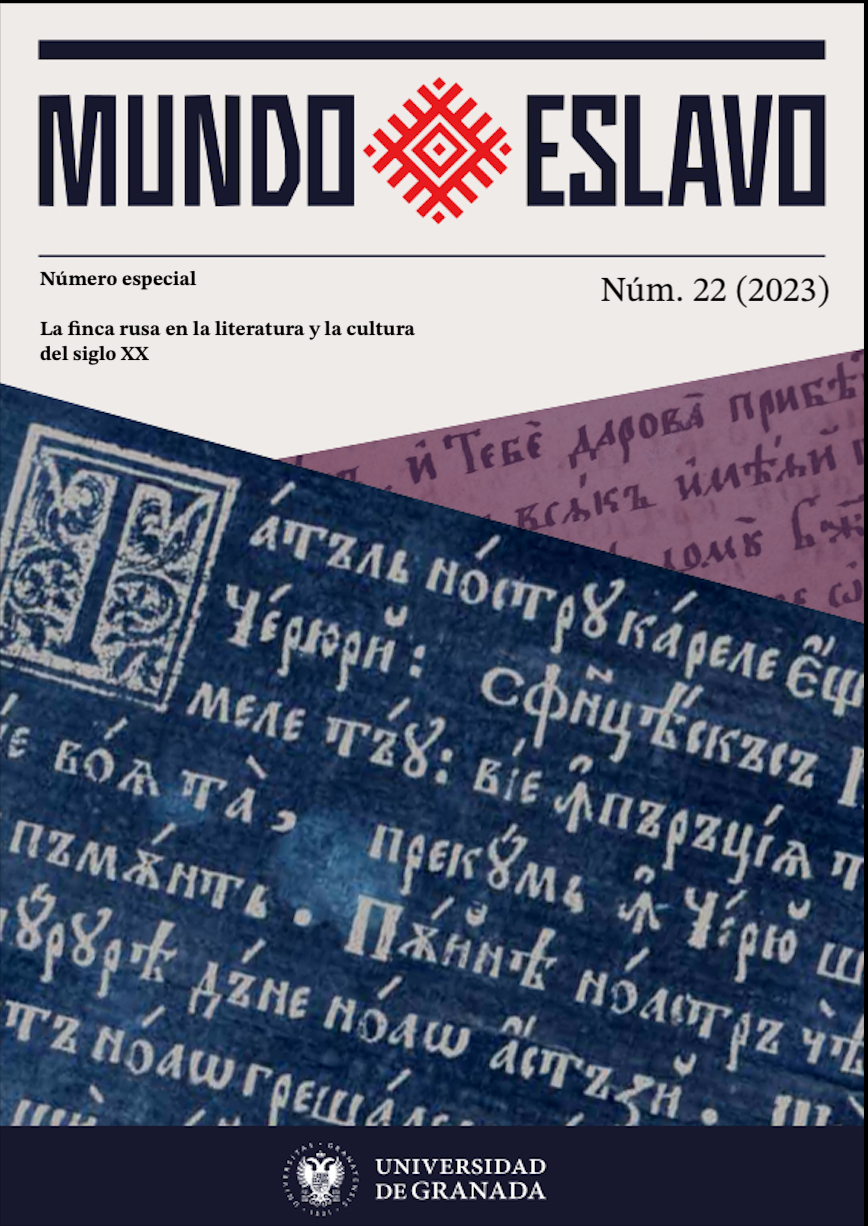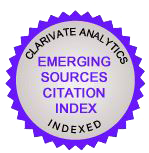History and transformation of Preobrazhenskoye estate: dynamics of the “estate topos” in the novel by A.N. Tolstoy Peter the Great
DOI:
https://doi.org/10.30827/meslav.22.25998Keywords:
A.N. Tolstoy, historical novel Peter the Great, Preobrazhenskoye estate, textual criticismAbstract
In the historical novel by A.N. Tolstoy Peter the Great, which was written between 1929 and 1945, shows a number of grand ducal and later royal residences. The mention of the Vorobyovo estate, Kolomenskoye, Vozdvizhenskoye and Pushkino estate is connected with the need to characterize the era and popular sentiments as well as describe in great detail the events. In the details and relying on historical sources, the author recreated the history of the residence and the royal court in Preobrazhenskoye estate, its heyday under Alexei Mikhailovich, desolation and showed the new life of the royal court and the construction of a funny fortress in Preobrazhenskoye estate under Peter. The fate of the Preobrazhenskoye Palace which was once the hunting residence of the young tsar’s father turns out to be closely connected with Peter’s himself transformations and innovations, which, on the one hand, contradict the traditional way of life, on the other, are the reconstruction and development of Alexei Mikhailovich’s ideas, forming a separate plot of the gradual, slow development of the royal court, its heyday during the period of maturation and training of young Peter and again fading away due to the development of new loci.
Downloads
References
Akimova, A.S. (2012). Pervyj tom trilogii A. Tolstogo «Petr I»: tekstologicheskie nabljudenija. V: Tekstologicheskij vremennik. Russkaja literatura XX veka: Voprosy tekstologii i istochnikovedenija. Kn. 2. (ss. 162–168). M.: IMLI RAN.
Akimova, A.S. (2016). Ispravlennyj «Petr Pervyj»: K istorii teksta romana A.N. Tolstogo. Studia Litterarum, 1(3–4), 262–277.
Akimova, A.S. (2022). Istorija carskih usadeb na stranicah romana A. N. Tolstogo «Petr Pervyj». Nauka i shkola, 5, 38–43. DOI: 10.31862/1819-463X-2022-5-38-43
Alpatov, A.V. (1958). Aleksej Tolstoj – master istoricheskogo romana. M.: Sovetskij pisatel’.
Bobrovskij, P.O. (1900). Istorija Lejb-gvardii Preobrazhenskogo polka: v 4 t. SPb.: Jekspedicija zagotovlenija gosudarstvennyh bumag.
Babichev, M. (1875). Proishozhdenie Preobrazhenskogo polka i s nim gvardii. Russkij vestnik, 2, 419–449.
Kaplun, M.V. (2020). K voprosu o zapadnoevropejskih istokah pervyh russkih komedij (po materialam Posol’skogo prikaza vtoroj poloviny XVII v.). Vestnik Tomskogo gosudarstvennogo universiteta, 451, 28-33. DOI: 10.17223/15617793/451/4
Pis’ma i bumagi imperatora Petra Velikogo (1887). V 6 t. SPb.: Gosudarstvennaja Tipografija.
Tolstoj, A.N. (1929). Petr Pervyj. Novyj mir, 11, 73–92.
Tolstoj, A.N. (1930). Petr Pervyj. L.: Priboj.
Tolstoj, A.N. (1938). Petr Pervyj. L.: Gosudarstvennoe izdatel’stvo «Hudozhestvennaja literatura».
Voroncova G.N. (2002). Semejnaja hronika Turgenevyh kak istochnik rannih proizvedenij A.N. Tolstogo. V: A.N. Tolstoj. Novye materialy i issledovanija (Rannij A.N. Tolstoj i ego literaturnoe okruzhenie) (ss. 15–36). M.: IMLI RAN.
Zabelin, I.E. (1883). Preobrazhenskoe ili Preobrazhensk, moskovskaja stolica dostoslavnyh preobrazovanij pervogo imperatora Petra Velikogo. M.: Tip. Je. Lissner i Ju. Roman.
Акимова, А.С. (2012). Первый том трилогии А. Толстого «Петр I»: текстологические наблюдения. Текстологический временник. Русская литература ХХ века: Вопросы текстологии и источниковедения. Кн. 2. (сс. 162–168). М.: ИМЛИ РАН.
Акимова, А.С. (2016). Исправленный «Петр Первый»: К истории текста романа А.Н. Толстого. Studia Litterarum, 1(3–4), 262–277.
Акимова, А.С. (2022). История царских усадеб на страницах романа А. Н. Толстого «Петр Первый». Наука и школа, 5, 38–43. DOI: 10.31862/1819-463X-2022-5-38-43
Алпатов, А.В. (1958). Алексей Толстой – мастер исторического романа. М.: Советский писатель.
Бобровский, П.О. (1900). История Лейб-гвардии Преображенского полка: в 4 т. СПб.: Экспедиция заготовления государственных бумаг.
Бабичев, М. (1875). Происхождение Преображенского полка и с ним гвардии. Русский вестник, 2, 419–449.
Воронцова Г.Н. (2002). Семейная хроника Тургеневых как источник ранних произведений А.Н. Толстого. А.Н. Толстой. Новые материалы и исследования (Ранний А.Н. Толстой и его литературное окружение) (сс. 15–36). М.: ИМЛИ РАН.
Забелин, И.Е. (1883). Преображенское или Преображенск, московская столица достославных преобразований первого императора Петра Великого. М.: Тип. Э. Лисснер и Ю. Роман.
Каплун, М.В. (2020). К вопросу о западноевропейских истоках первых русских комедий (по материалам Посольского приказа второй половины XVII в.). Вестник Томского государственного университета, 451, 28-33. DOI: 10.17223/15617793/451/4
Письма и бумаги императора Петра Великого (1887). В 6 т. СПб.: Государственная Типография.
Толстой, А.Н. (1929). Петр Первый. Новый мир, 11, 73–92.
Толстой, А.Н. (1930). Петр Первый. Л.: Прибой.
Толстой, А.Н. (1938). Петр Первый. Л.: Государственное издательство «Художественная литература».
Downloads
Published
How to Cite
Issue
Section
License
Copyright (c) 2023 Mundo Eslavo

This work is licensed under a Creative Commons Attribution-NonCommercial-ShareAlike 4.0 International License.

CC BY-SA: This license allows reusers to distribute, remix, adapt, and build upon the material in any medium or format, so long as attribution is given to the creator. The license allows for commercial use. If you remix, adapt, or build upon the material, you must license the modified material under identical terms.
CC BY-SA includes the following elements:
BY ![]() – Credit must be given to the creator
– Credit must be given to the creator
SA ![]() – Adaptations must be shared under the same terms
– Adaptations must be shared under the same terms
Authors who publish with this journal agree to the following terms:
1. Authors retain copyright and grant the journal right of first publication with the work simultaneously licensed under a Creative Commons Attribution License that allows others to share the work with an acknowledgement of the work's authorship and initial publication in this journal.
2. Authors are able to enter into separate, additional contractual arrangements for the non-exclusive distribution of the journal's published version of the work (e.g., post it to an institutional repository or publish it in a book), with an acknowledgement of its initial publication in this journal.
3. Authors are permitted and encouraged to post their work online (e.g., in institutional repositories or on their website) prior to and during the submission process, as it can lead to productive exchanges, as well as earlier and greater citation of published work (See The Effect of Open Access).













